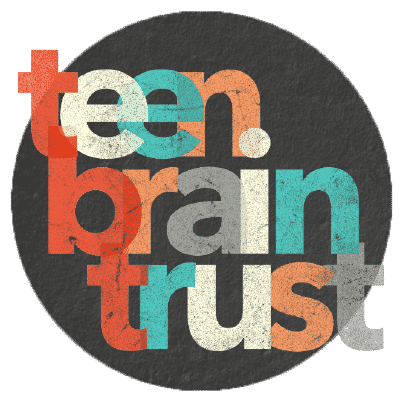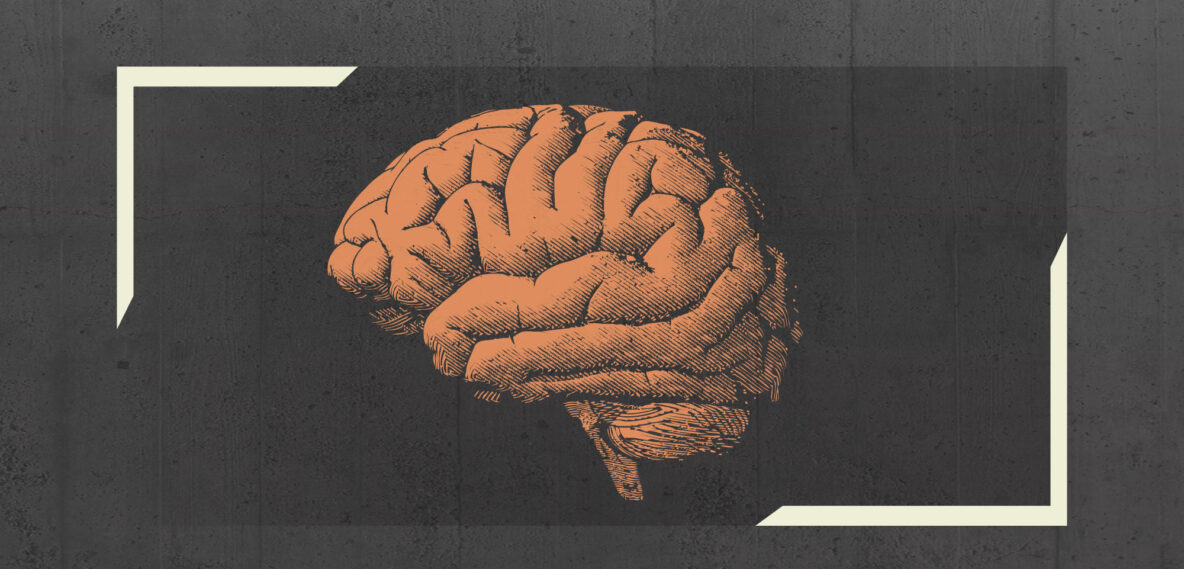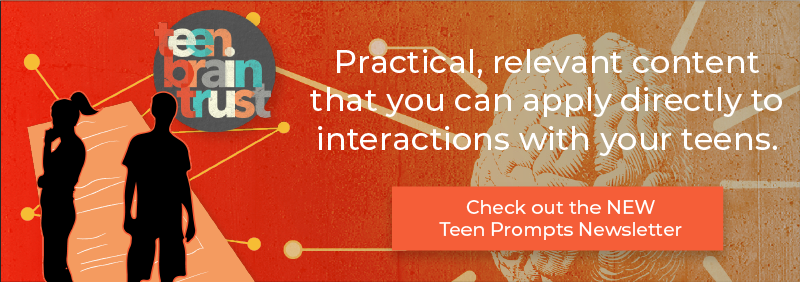How to Help Teens Reframe Their Thinking
Cognitive reframing is a practice from Cognitive Behavioral Therapy (CBT) that helps people challenge and replace unhealthy/unhelpful thought patterns with healthier and more functional ways of thinking.
Human beings are creatures of habit. And for good reason! Habits allow us to go through life with little or no conscious thought. Have you ever tried to go through even one day making conscious decisions about everything that you’re doing!?! You literally can’t!
Habits are an absolute must-have in the grand scheme of human behavior & development.
Most people think of habits and they think of things that we do, you know, brushing your teeth in the morning, walking/driving the same way to work/school each day, biting your nails/trying not to bite your nails, things you DO.
But we also have habitual ways of thinking, automatic thought-processes, that guide our information processing, assumptions, preconceived notions, and thought patterns. These habitual ways of thinking allow us to do a lot of our thinking without needing to think about it (meta right?). If you’d like to learn a little more about how that works check out our article on schema.
The thing about habitual ways of thinking (aka schema, aka thought patterns) is that once we have them they’re really hard to get rid of. This is mostly fine because a great number of our thought patterns are super helpful. But every now and then we run into one of our habitual ways of thinking that is not helpful or even unhealthy and destructive.
What are we to do in this case?
This is where cognitive reframing (also called cognitive restructuring) can help.
Cognitive reframing is a practice from Cognitive Behavioral Therapy (CBT) that helps people challenge and replace unhealthy/unhelpful thought patterns with healthier and more functional ways of thinking.
One of the fundamental principles of CBT is that our thoughts influence our feelings and behavior. Thus, by reframing the way we think about something we can influence our behavior and emotions in a positive way.
While the techniques and practices we talk about in this article are derived from therapy there is a lot of evidence-based research that shows that self-directed CBT can make a positive difference in people's lives. Thus, the following techniques and practices can be applied anytime and anywhere.
Many of them are useful when working with and talking to teenagers. Like us, teens are human and have a tendency to get caught up in seeing themselves and situations from a certain point of view. If you find your teenager expressing an unhelpful or unhealthy thought pattern or belief (ex. I’m bad at math) the following techniques can help you help them reframe that thought pattern or belief.
Important Disclaimer: If you are interested in applying some of these techniques in your parenting, make sure your kids are willing participants. Active participation is required when reframing thoughts so if you try and ‘make your kids do this’ it will not go well.
That being said, here are some good places to start if you’re out to reframe your thinking:
Increasing Thought Awareness:
The first step in any cognitive reframing process is to discover and become aware of the thought patterns you have that are not helpful. If we’re not aware of what our thoughts are then we’re not able to work on them. It helps to be able to put a name or framework to the kinds of thoughts we want to work on. If you haven’t already we recommend reading our article on Cognitive Distortions as it will help give you an idea of what to look for.
Being aware of your thoughts is a practicable skill. It takes time and effort to improve your awareness. There are a number of ways to practice this. It might be as simple as reminding yourself periodically to pay attention to what you’re thinking, maybe set an alarm to go off several times per day. Mindfulness techniques such as journaling and meditation are also helpful in this regard. Such techniques can be used broadly or in a targeted fashion (ex. Journaling or meditating for 5 minutes on something in your life you’re wrestling with or that triggers you).
Pay particular attention to events and situations in which you have negative thoughts or emotions, these might alert you to the presence of cognitive distortions.
Once you’ve distinguished a thought pattern you’d like to reframe there are a number of techniques and practices you can use to go about it.
Below is a list of some of our favorites.
Socratic Questioning:
2,500 years later and the Socratic Method is still one of the most effective tools for challenging ideas that we have at our disposal, even if those ideas are our own.
The basic outline of this technique is to state your existing belief, assumption, or preconceived notion, then ask questions that challenge it.
For example, if you have a belief about yourself that you’re a bad parent you could ask yourself the following questions:
- Is there another valid way of looking at this?
- Am I basing my belief on facts or on my feelings?
- What evidence is there to back up this belief?
- Is it possible that I’m misinterpreting the evidence?
- Is the situation really this black and white or does it have more layers that I’m not considering?
- Etc . . .
Socratic questioning is all about using logic to uncover where we have cognitive distortions in our thinking. Once we become aware of the faulty logic in our thought patterns we’re much less likely to engage with those thoughts.
Disclaimer: This does not mean you should go around pointing out faulty logic in other people's thoughts and assumptions. Effective cognitive reframing requires the willing participation of the person engaging in it!
Thought Records:
Thought records are tools for recording your experiences as well as the thoughts, feelings, & behaviors that accompany them.
A typical thought record will include the situation, thoughts, emotions, & behaviors, as well as an alternate thought you could have around the situation. Recording an alternate thought helps you self-generate different ways of perceiving a situation.
Example thought record:
|
Situation |
Thought |
Emotion |
|
My kid threw a party at my house without my permission |
I can’t trust them. If they can’t act right they should suffer consequences. They’re irresponsible and inconsiderate. |
Angry |
|
Behavior |
Alternate Thought |
|
I yelled at them, grounded them, we got in a fight and I couldn’t sleep at all last night. |
This is normal teenage behavior, it’s not personal. How can I let them be a teen AND keep my house from getting trashed? |
Positive Belief Record:
This is essentially creating a pros & cons sheet for a belief you’d like to modify and what a potential reframe could be.
Using the ‘bad parent’ example from earlier, a positive belief record might look like this:
|
Current Belief: I’m a bad parent |
|
|
Pros: |
Cons: |
|
It’s simple It matches my feelings |
There’s no nuance It doesn’t allow any room for improvement It reinforces my negative feelings about myself |
|
Potential Reframe: There are some aspects of my parenting I’d like to work on |
|
|
Pros: |
Cons: |
|
It allows for actionable next-steps It allows me to make mistakes without making me a bad person/parent There’s more evidence to support this belief It allows for nuance and complexity |
. . . |
The Semantic Method:
What you say and the way you say it is important, even if you’re just saying it to yourself.
For example, if you’re someone that falls victim to ‘Shoulds’, as in, I should be eating healthier, or I should be more successful than I am now, etc . . ..
‘Shoulds’ are a classic cognitive distortion we all fall victim to now and again. The consequence of engaging in ‘shoulds’ is we can feel inadequate, guilty, resentful, and frustrated when we don’t live up to our own ‘shoulds’ or when people in our lives don’t live up to the ‘shoulds’ we set for them.
Luckily, there’s an easy way to alter this internal dialogue and make it healthier. Replace every ‘should’ with ‘it would be nice if’.
It may feel silly or unrealistic to think that changing the semantics of a statement will make a big difference in the way we feel and our behavior but there’s actually quite a lot of evidence to back this up. The way we think about ourselves and others has a big impact on the way we feel and behave. By altering these thoughts, even by just changing ‘should’ to ‘it would be nice if’, we can improve our relationships, our self-esteem, and our corresponding behavior.
& Many More:
In addition to the ones listed above, there are many other evidence-based techniques and practices out there you can use to challenge and reframe your default thought patterns & beliefs.
Like improving your awareness of your thoughts, actually reframing them is a skill. The more you practice reframing your thoughts and beliefs the easier it will become.
So start taking your thoughts and putting them under the microscope, put them on trial. How many thoughts and beliefs do you have living in your head rent-free that are unhelpful or unhealthy?
Remember, the first step to all of this is to increase thought awareness. Start paying attention to what’s going on in your head, you might be surprised at what you discover.
by Robin Friend Stift - Co-Creator & Lead Course Designer for Teen Brain Trust
and Dr. Dana Dorfman - Lead Advisor for Teen Brain Trust | visit site
Share this Post


